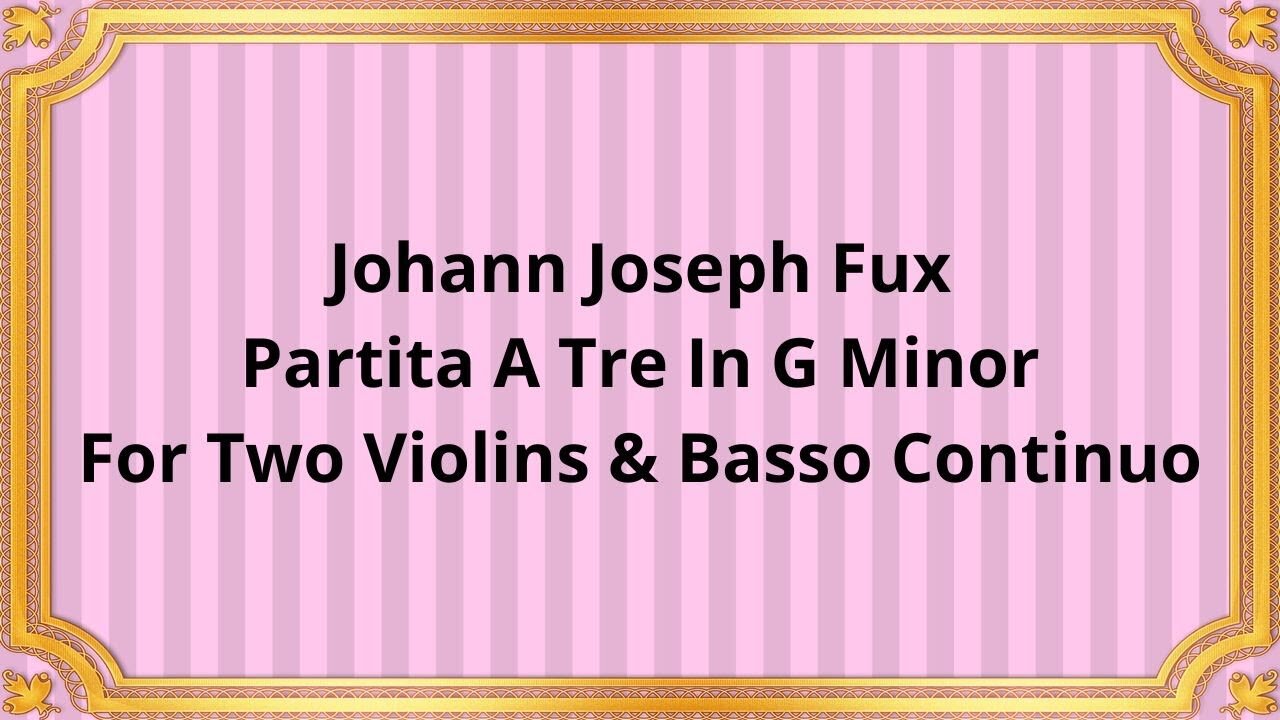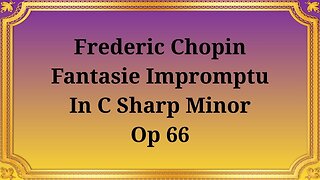Premium Only Content

Johann Joseph Fux Partita A Tre In G Minor For Two Violins & Basso Continuo
#ClassicalMusic #JohannJosephFux #PartitaATre #GMinor #TwoViolins #BassoContinuo #MusicalComposition #BaroqueMusic
Ernst Prappacher, Bassoon
Marga Scheurich, Harpsichord
Jorg-Wolfgang Jahn and Jurgen Wolf, cello
Johann Joseph Fux's Partita A Tre In G Minor for Two Violins & Basso Continuo is a remarkable composition that showcases the brilliance of classical music during the Baroque period.
Johann Joseph Fux, an influential Austrian composer and music theorist, composed the Partita A Tre in the early 18th century. Fux was highly regarded for his mastery of counterpoint, a technique that is evident in this composition. The Baroque era, known for its ornate and elaborate musical style, provided the perfect backdrop for Fux's creativity and innovation.
The Partita A Tre in G Minor is written for two violins and basso continuo, a bass instrument that provides harmonic support. It is divided into several movements, each showcasing different moods and musical ideas. The piece follows the traditional dance suite structure, consisting of an opening movement, followed by a series of stylized dances such as allemande, courante, sarabande, and gigue.
Fux's expert use of counterpoint is evident throughout the composition. The interplay between the two violins, with their intertwining melodies and harmonies, creates a rich tapestry of sound. The basso continuo adds depth and rhythmic stability, providing a solid foundation for the ensemble.
The Partita A Tre in G Minor is characterized by its emotional depth and expressive qualities. Fux skillfully weaves together moments of tension and resolution, creating a captivating musical narrative. The slower movements, such as the sarabande, showcase Fux's ability to evoke deep emotions through the use of expressive melodies and poignant harmonies. The faster movements, such as the gigue, are filled with energy, showcasing Fux's mastery of rhythmic complexity.
Fux's Partita A Tre in G Minor is a testament to the rich musical heritage of the Baroque period. It exemplifies the technical and artistic innovations of the time, with its intricate contrapuntal writing and elaborate ornamentation. This piece, along with Fux's other compositions, greatly influenced subsequent generations of composers, leaving a lasting impact on the development of classical music.
Conclusion:
Johann Joseph Fux's Partita A Tre In G Minor for Two Violins & Basso Continuo stands as a testament to the artistry and brilliance of classical music during the Baroque period. Its intricate structure, emotional depth, and historical significance make it a captivating composition that continues to enthrall audiences to this day. Through its exploration of counterpoint and expressive melodies, this piece serves as a timeless reminder of the beauty and power of classical music.
You have the opportunity to support the channel:
https://destream.net/live/RadSiarAl/donate
https://www.buymeacoffee.com/6355radsiaral
-
 4:24
4:24
Classical music_Music Inspiration
19 days agoFrederic Chopin Fantasy-Impromptu in C-sharp minor, Op 66
371 -
 LIVE
LIVE
Barry Cunningham
9 hours agoBREAKING NEWS: PRESIDENT TRUMP AND PETE HEGSETH MAKE HUGE ANNOUNCEMENTS!
8,387 watching -
 25:11
25:11
Tucker Carlson
19 hours agoThe 9/11 Files: The Cover-up Commission | Ep 2
64.9K28 -
 LIVE
LIVE
LFA TV
9 hours agoBREAKING NEWS ALL DAY! | TUESDAY 9/30/25
1,315 watching -
 46:26
46:26
JULIE GREEN MINISTRIES
2 hours agoLIVE WITH JULIE
44.9K134 -
 1:09:10
1:09:10
Game On!
20 hours ago $1.28 earnedFINALLY! MLB Postseason IS HERE!
34.6K2 -
 10:29
10:29
Ken LaCorte: Elephants in Rooms
18 hours ago $2.59 earnedWhy Did Britain Protect Child Molesters?
37.8K19 -
 8:19
8:19
Adam Does Movies
1 day ago $1.06 earnedOne Battle After Another - Movie Review
13.1K2 -
 39:24
39:24
NAG Daily
15 hours agoThe Rezendes Rundown Ep. 21 - National Distress
12K1 -

BEK TV
1 day agoTrent Loos in the Morning - 9/30/2025
11.2K1